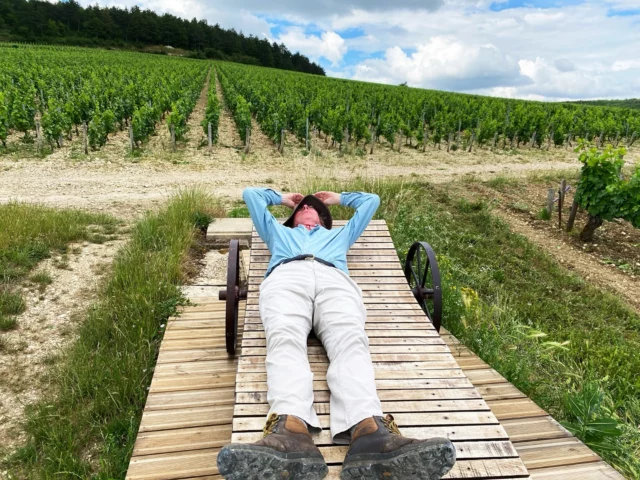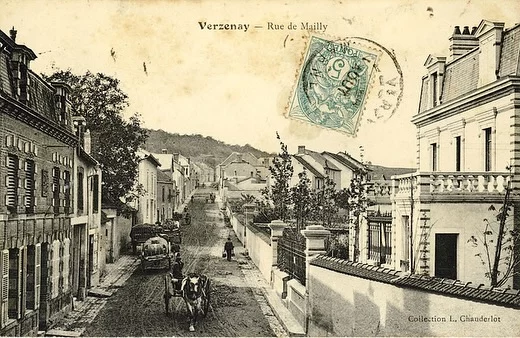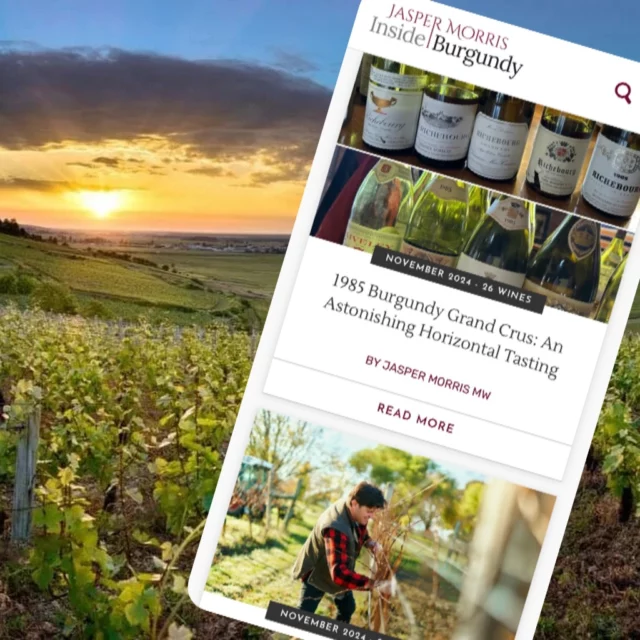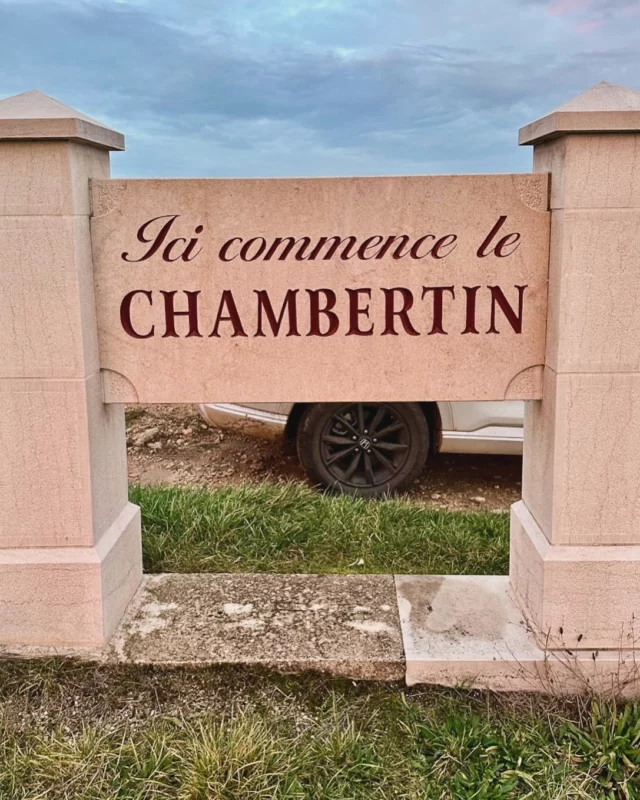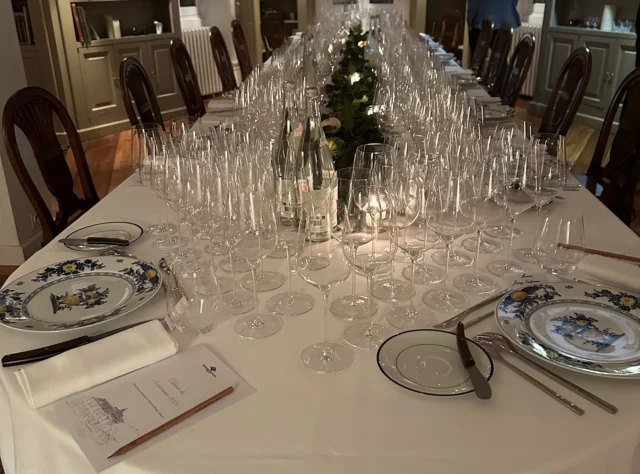2015 Vintage Overview
Updated Sep 2022
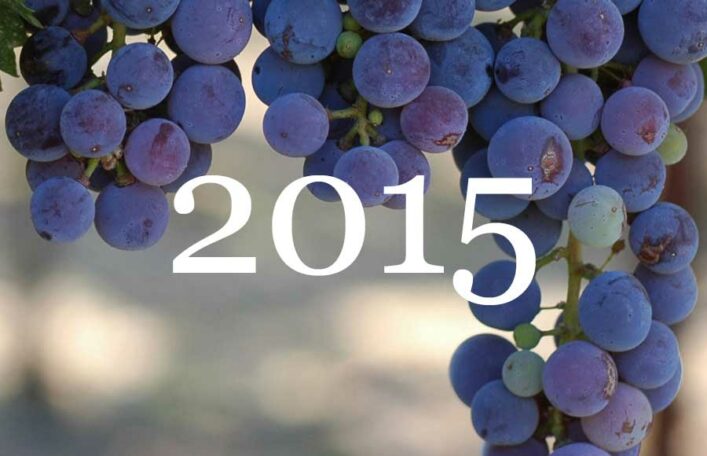
The Weather
2015 was a relatively carefree growing season. There was no frost damage and only one hail storm in the Côte d’Or, on May 20th, affecting Puligny-Montrachet to a small extent. However, the early summer featured warm to hot days and cool nights with a consequent high risk of oidium. Late in the season there was also some mildew pressure.
The flowering was early and took place rapidly in good weather conditions. But a naturally small bunch set and the dry conditions through most of the summer limited the size of the harvest, while many pinot vines in the Côte de Beaune set small crops, having suffered so much from hail over the three preceding vintages. The wood is much more fragile on pinot compared to chardonnay.
It was an exceptionally dry and often hot summer, though happily the water table had been well replenished during the previous winter. Some vines shut down some of their functions during July’s heatwave, retarding veraison especially in the Cote de Nuits, though welcome rainfall in August partially offset the drought. Young vines and those planted on the upper slopes with very little topsoil may have suffered nonetheless.
However, one feature of the summer which may well have a positive effect on the wines was the extraordinary luminosity: clear bright skies consistently, rather than heavy, lowering heat.
Picking for whites began in late August, growers reporting golden grapes, tasting ripe, with adequate sugars and lowish acidities – especially the malic acid which burns off during hot weather. Red grapes were further behind, with the skins not phenologically ripe.
The first pickers could be seen on Wednesday 26th August (Arnaud Ente), Thursday 27th (Jean-Marc Roulot, Comte Lafon) in fine weather, which became very hot over the weekend. Le Grand Départ for the Côte de Beaune whites began on Monday 31st, again a very hot day though expected to become stormy overnight. In the end the evening rain was relatively gentle (except in Chablis), continuing a little the following day which saw a change of wind to the north, and therefore a significant drop in temperature.
In the Yonne department, a vicious storm moved up from the south, hitting the appellations of Irancy, St-Bris and Bourgogne Chitry in the early morning of 1st September, a deluge of rain accompanied by outsize hailstones. The corridor of devastation breached the Chablis vineyards at Courgis, then into the heart of the appellation through parts of Montmains to grands crus Chablis and Blanchots, as well as the premiers crus Montée de Tonnerre and Mont de Milieu. Given that the grapes were ready to be picked when this happened, vignerons could at least go into their vineyards straight away and harvest what was left – the affected vineyards typically lost half their crops but without any obvious effect on quality. The storm was actually good news in those areas where only rain fell as it re-inflated the somewhat dehydrated grapes and not only restored some quantity but enabled a better juice to skin ratio.
The Côte de Beaune pretty much finished picking in good weather over the following week, and the Côte de Nuits got underway the week after, some completing the harvest before the wet weekend of 12th/13th September – heavy rain on Saturday afternoon and storms on Sunday. The following week was unsettled with showers, occasionally heavy, and sunny spells, which will have been less pleasant for the pickers in the Côte de Nuits and the Hautes Côtes but unlikely to have caused much damage to the healthy grapes.
First Impressions
Overall, the fine warm summer interspersed with occasional rainfall provided close to ideal conditions to encourage the production of great wines. Indeed, there seems to have been remarkably consistent success throughout Burgundy with the following limited negatives: young vines which may have suffered from drought; vines on very poor soils (high on slope, no topsoil) which suffered from drought; limited mildew and sunburn issues; those who picked their white grapes too late; hail damage in Chablis.
The wines in bottle
In youth, the typicity of Chablis in 2015 has been somewhat hidden beneath a veneer of ripe sunshine fruit. The classical marine mineral character should emerge in due course, but may still need a little longer.
As expected, the cooler setting of St-Aubin showed well in 2015, with even the sunny sites offering depth of fruit and good balance. Meursault showed good potential in the Burgfest tastings: the colours were fresher than for most of Chassagne-Montrachet, the fruit was a little deeper, while the all-round impression of freshness was perhaps enhanced by the considerable number of wines which had been made in a reductive style. There was clearly much more weight evident in the Perrières flight, but sometimes the wines seemed a little less well balanced. There were some fine wines individually from Corton-Charlemagne, but overall the appellation did not sing as loudly as it should have.
The first few flights of Puligny-Montrachet at Burgfest somewhat discouraged us, showing more of the possible over-ripeness of the vintage and less vineyard personality than we would have hoped for. The turn-around came with Les Referts, not usually considered a top terroir but here the colours were brighter and there was greater depth of fruit and more balanced ripeness. This happier trend continued, showing a bias in favour of the soils with more clay towards the north and the east of the commune, compared to the south and west.
It was no surprise to find some really lovely wines amongst the lower lying more clay rich vineyards such as Bâtard-Montrachet, and we were not disappointed by the most famous vineyard of all. We were not so sure that Chevalier-Montrachet would do well, as the premiers crus had tended to show a slight preference in favour of the lower slopes with more clay in the soil – but despite its relative altitude and thin top-soil, Chevalier-Montrachet acquitted itself very well as an appellation. 2015 can be considered an extremely good white Burgundy vintage at grand cru level.
Moving on to the reds, the two flights of Beaune kicked us off to an excellent start at the annual Burgfest Three Year On tasting. I would not say that we were disappointed by the offerings from Volnay, but the step up from Beaune was perhaps less striking than usual. In contrast, the structure of the Pommard appellation has revelled in the rich juicy fruit of 2015, a great partnership.
We tasted many excellent wines from Nuits-St-Georges, though in two different styles. The vineyards south of Nuits, including those in Premeaux were in a fresher, red fruited style – typical for Premeaux but much less expected in the Les St Georges sector which often displays black fruit. Those north of Nuits showed some signs of the long hot summer, with very ripe fruit, though only rarely was it overblown. Firm but not dry tannins characterised two largely impressive flights of Clos de Vougeot. Chambolle-Musigny excelled especially at Grand Cru level, while Morey-St-Denis was a little short of its very best showing. The vintage shows itself extremely well in Gevrey-Chambertin, the wealth of ripe fruit adding flesh to the bones without denaturing the essential red fruit style of the appellation. Our habit is to taste Vosne-Romanée on the last day, out of geographical order, and certainly in 2015 we had some stunning results in both premier and Grand Cru categories.
Overall, this is indeed a fabulous vintage for red Burgundy enthusiasts, in the richer style which is more common these days than a generation ago. Perhaps 1990 was the first of these vintages in modern times. There will be those who prefer a lighter touch in their Burgundy, but the good news is that producers appear to be able to handle the sunshine without losing balance in their wines.
Generic wines and some village wines can be started now. Other bottles higher up the scale may well provide beautiful drinking already, but there is more to develop with further cellaring.
